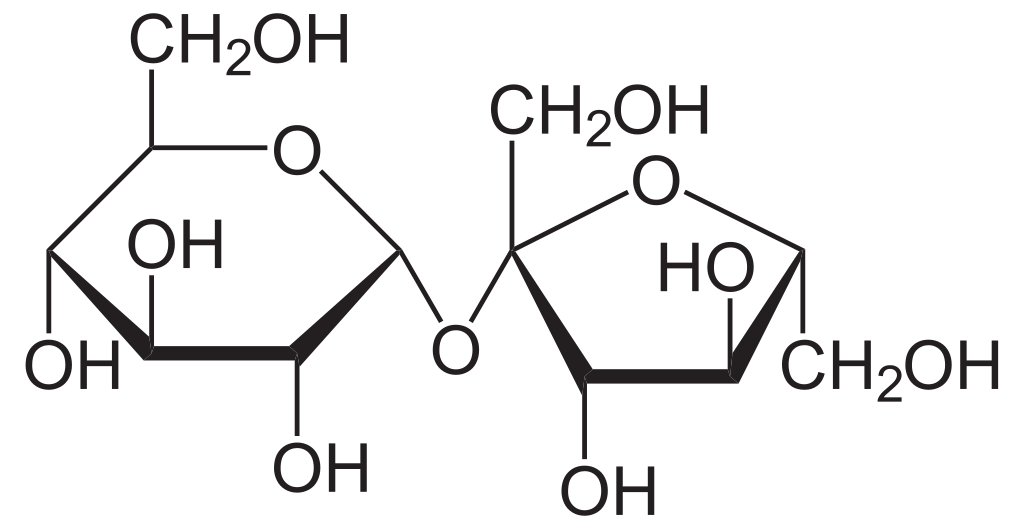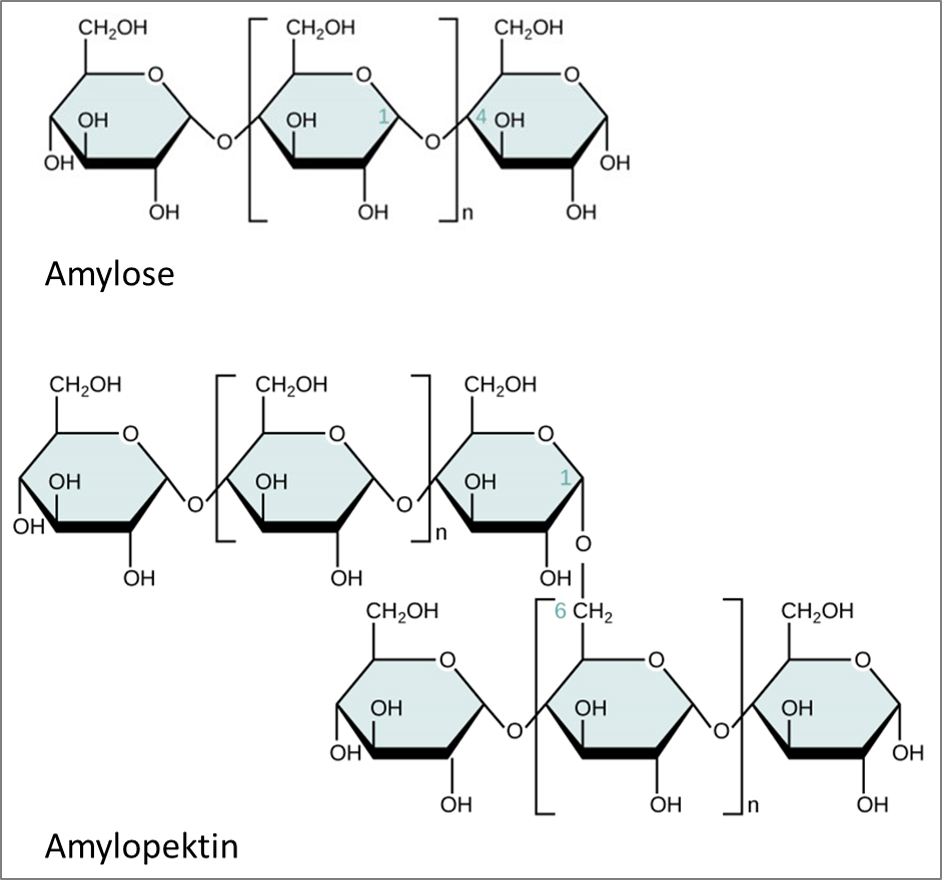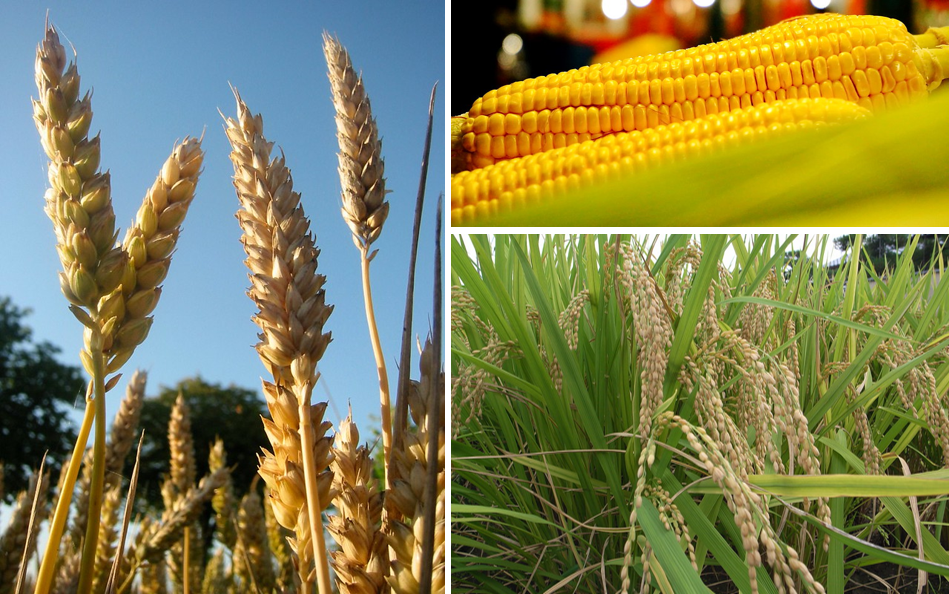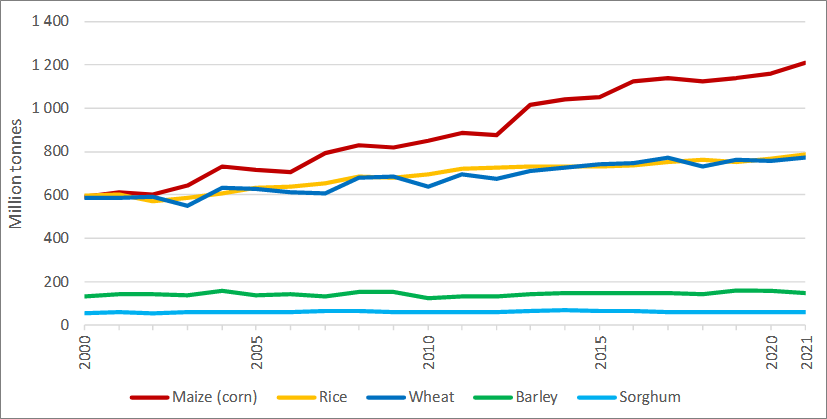2. Resources for the bioeconomy
Sugar
Plants synthesize simple sugars such as fructose and glucose directly from water and carbon dioxide with the help of sunlight during photosynthesis. Hydrogen is split off from the water, producing oxygen. The hydrogen is transferred to the carbon dioxide and fixed in a carbon compound.

Important sugar-containing crops
Sugar cane and sugar beet are important sugar-containing crops that occupy considerable acreage worldwide.
1.9 billion tons of sugar cane and 270 million tons of sugar beet were produced worldwide in 2021 (FAO 2022). Important sugar cane growing countries are Brazil (38%) and India (22%), which together produce 60% of the total harvest (FAO 2022). In Brazil, around 45% of the sugar cane produced is used for the production of bioethanol (https://encyclopedia.pub/entry/17495).
World Bioethanolproduction 2021: 104,5 Mrd.l (https://www.isosugar.org/sugarsector/ethanol). Of which a total of approx. 25 % from sugar cane (Hoang 2021, https://encyclopedia.pub/entry/17495)
Sugar beet is mainly grown in Russia, France, the USA, Germany and Turkey. They are mainly processed into sugar. Around 31.9 million tons of sugar beet were produced in Germany in 2021 (BLE 2022). However, some of the sugar beet grown is also used to produce ethanol or biogas. In Germany, around 1.3 million tons of sugar beet were used for ethanol production in 2021 and around the same amount for biogas production (FNR 2022).
The variety of products made from sugar beet is shown on this website.
Statistical data on the cultivation and use of sugar beet in Germany are summarized in this report by the Bundesanstalt für Ernährung und Landwirtschaft.
1.9 billion tons of sugar cane and 270 million tons of sugar beet were produced worldwide in 2021 (FAO 2022). Important sugar cane growing countries are Brazil (38%) and India (22%), which together produce 60% of the total harvest (FAO 2022). In Brazil, around 45% of the sugar cane produced is used for the production of bioethanol (https://encyclopedia.pub/entry/17495).
World Bioethanolproduction 2021: 104,5 Mrd.l (https://www.isosugar.org/sugarsector/ethanol). Of which a total of approx. 25 % from sugar cane (Hoang 2021, https://encyclopedia.pub/entry/17495)
Sugar beet is mainly grown in Russia, France, the USA, Germany and Turkey. They are mainly processed into sugar. Around 31.9 million tons of sugar beet were produced in Germany in 2021 (BLE 2022). However, some of the sugar beet grown is also used to produce ethanol or biogas. In Germany, around 1.3 million tons of sugar beet were used for ethanol production in 2021 and around the same amount for biogas production (FNR 2022).
The variety of products made from sugar beet is shown on this website.
Statistical data on the cultivation and use of sugar beet in Germany are summarized in this report by the Bundesanstalt für Ernährung und Landwirtschaft.

Starch
The plant quickly synthesizes starch from glucose, as this can be stored better and does not negatively affect the osmotic conditions. Starch consists of numerous glucose units that are linked via glycosidic bonds to form amylose or amylopectin.

Important starch-containing crops
Important crops containing starch, which account for a large proportion of the world's arable land, are the cereals maize, rice and wheat.
Maize or corn
Corn accounts for by far the largest share of the total amount of grain harvested and amounted to 1.2 billion tons worldwide in 2021. Around 31% of this quantity (approx. 384 million tons) was produced in the USA alone. Other important growing countries are China and Brazil. The cultivation of maize has expanded significantly in recent years, mainly due to its use for bioethanol and biogas production and as animal feed (FAO 2022). In the USA in particular, the majority of bioethanol produced is made from maize. The USA produced almost 57 billion liters of bioethanol in 2021, 93.8% of which was produced from corn (RFA 2022, p.25) 127 million tons of corn were used for this (USDA 2023, Feed Grains Yearbook). With a 55% share of global ethanol production, the USA is the largest producer of bioethanol. It can therefore be said that most of the bioethanol available worldwide is produced from maize.

60% of the rice produced worldwide (2021: 787 million tons) is grown in China (27%), India (25%) and Bangladesh (7%). Rice is mainly used for food production.
Wheat
Wheat cultivation is not so strongly concentrated in individual producing countries. Only 40 % of the 787 million tons of wheat produced worldwide is produced in three countries: China (18 %), India (14 %) and Russia (10 %). The remaining 60% is produced in various other parts of the world. The quantities produced in China and India are also consumed there, while Russia, the USA, Canada, the EU and Ukraine export large parts of their production (Wolf et al. 2018)
Around 80% of wheat is used for food production, the rest for industrial applications or as animal feed.
In Germany, around 21.5 million tons of wheat were grown on 2.9 million hectares in 2021. Around 3% of this quantity was used for bioethanol production (FAOSTAT 2022 and FNR 2022).
